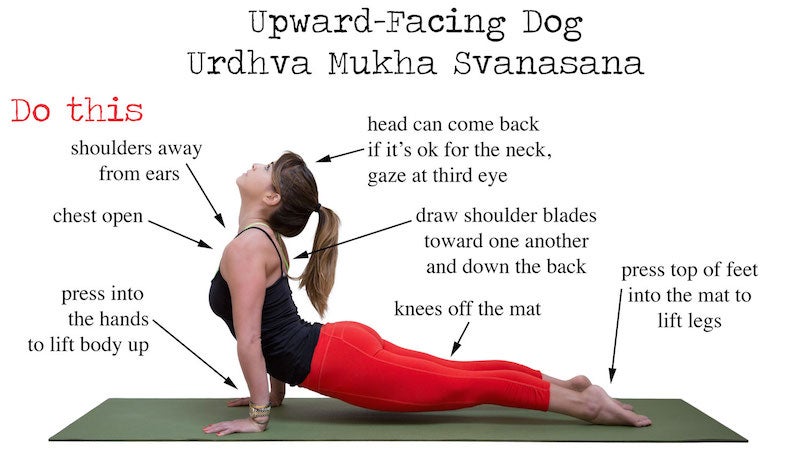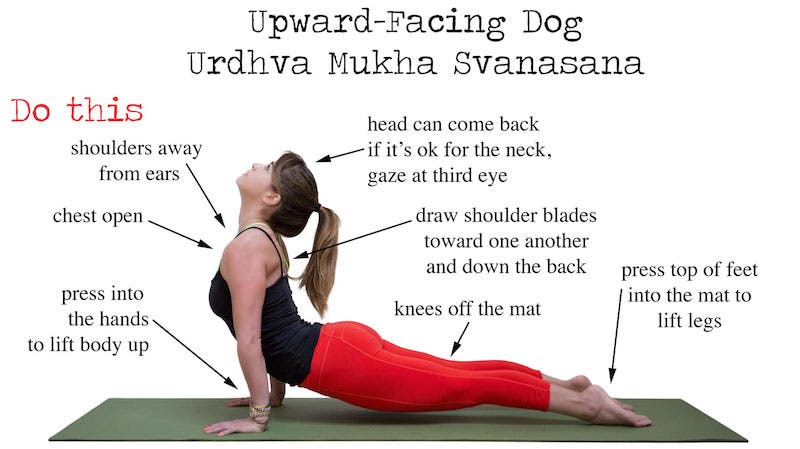Do This, Not That: Upward-Facing Dog (Urdhva Mukha Svanasana)


It’s one of the most common yoga poses, which makes getting it right extra important. Check back in with your form this foundational pose.
Upward-Facing Dog (Urdhva Mukha Svanasana) is a powerful pose that awakens upper-body strength and offers a wonderful stretch for the chest and abdomen. It’s also one of the most common poses in vinyasa flow sequencing, which of course means it’s even more important to get it right to prevent injury. In general, it’s a good idea, for even experienced practitioners, to check back in once in a while with their form in foundational yoga poses like this one.
Also see3 Ways to Make Downward-Facing Dog Feel Better
Common Challenges in Upward-Facing Dog

Bad news: Often misalignment in one part of the body can trigger a domino effect for the entire pose. Good news: Just focusing on a couple key alignment cues that yogis struggle with can sometimes bring the whole body back into alignment.
In Upward-Facing Dog, the most common challenge is keeping the shoulders from creeping up toward the ears. This happens when we rest weight in the wrists, instead of pressing through the hands to create length and the sensation of a lift.
Another key challenge in this pose is engaging and lifting the legs. If you don’t press into the tops of the feet and engage the legs, the kneecaps and pelvis sag and rest on the mat. Take a closer look in the next slides.
See also3 Ways to Make Chaturanga Work Better for Your Body

DO THIS Press into hands
On the left, you can see how pushing through the hands lengthens the body and brings the wrists, elbows, and shoulders into alignment.
NOT THAT Collapse into wrists
On the right, you can see what happens when you collapse weight into the wrists. Not only can this be painful, but it also causes the chest to close off, the wrists, elbows, and shoulders to form a slightly diagonal line, the shoulder blades to pop out, and the neck to disappear.
Also see3 Ways to Make Pigeon Pose Feel Better

DO THIS Lift the legs
Actively press the tops of the feet into the mat to lift the kneecaps and awaken and engage the quads. This brings length and strength into the legs.
NOT THAT Rest legs on mat
The legs should be lifted and active in Upward-Facing Dog. Here, you can see the legs are resting.